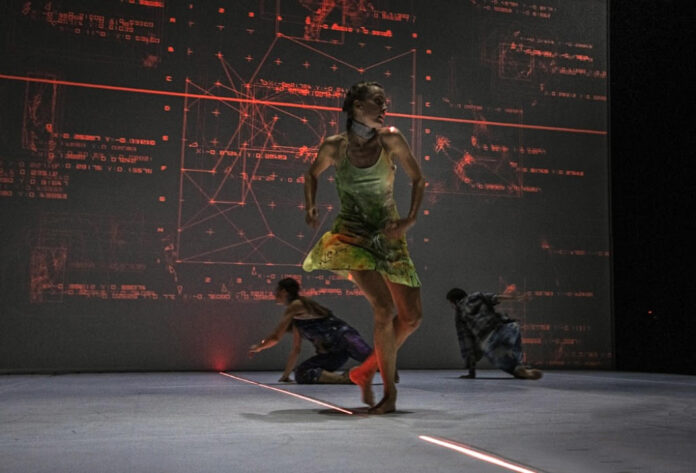Pontus Lidberg was born in Stockholm in 1977. A choreographer and filmmaker, he was the son of a psychologist and psychiatrist, and with a solid foundation he has become one of the strongest names in the Scandinavian scenes.
In Stockholm, he studied at the Royal Swedish Ballet School, and in Paris at the Conservatoire de Musique et de Danse. He then earned his master’s degree in Contemporary Performing Arts at the Gothenburg University. He has been artistic director of the Danish Dance Theatre in Copenhagen since spring 2018.
To his credit, he has commissioned works at the Opéra di Parigi (Lesnoces), New York City Ballet (The Shimmering Asphalt), Ballets de Monte-Carlo (Summer’s Winter Shadow),SemperoperBallett di Dresda (In Anderen Raum), Martha Graham Dance Company (Woodland), Ballet du Grand Théâtre de Genève (a Giselle modern, migrant), Balletboyz (Rabbit), Beijing Dance Theatre (Luminous), Acosta Danza (Paysage, Soudain, La nuit), Morphose The Wheeldon Company (Metamorphose one) and the Royal Swedish Ballet (Raymonda).
He also assembled, among others, on of his Faune for his group in 2011.
His film The Rain (2006), is full of strong emotions, with Hedda Staver Cooke, Yvan Auzely (Albrecht of Giselle by Mats Ek), Pontus Lidberg and Giovanni Bucchieri, Alicia Vikander, Filip Gauffin, and music by Joni Mitchell, David Lang, Hugo Therkelson, Jacques Brel, Oswaldo Farres, Sergei Rachmaninov. The film Labyrinth Within (2010) was with Wendy Whelan and the breaker Giovanni Bucchieri, and it received many awards. Where as, Written on Water (2019) was with Aurélie Dupont (now director of the Opéra de Paris) and Alexander Jones at her side, is a result of a positive fundraising action.
In this 2020 of artists’ solitude, Pontus reacted creatively with the elegant Drawing to a Close,commissioned for online viewing.
Pontus Lidberg’s Centaur
At the Oriente Occidente Dance Festival of Rovereto (the 40th of this event),Lidberg hosted the brand-new Centaur, second stage of a reflection on man, in this case in relation to artificial intelligence. The first, Siren, debuted at the Teatro Zandonai, was a creation on the themes of man-woman, man-animal.
Centaur moves men and woman by a work of creativity – a digital voice guide called “David”, who directs their dancing paths on the stage.
Cecilie Waagner Falkenstrøm collaborated with the installation of the Artificial Intelligence, Tomonaga Tokuyama for visual programming, and the Denmark University for the computer programming.
The algorithm-choreographer, projected in the background, gives instructions to each individual performer, indicating where to move and where to go, gradually enumerating the positions to be reached. The A.I. omniscient analyses the personalities of the dancers, processes the music, and has a much higher space-time calculation rate than humans.
In the second part of Centaur, the dance takes more body and more colour with allusions to the mythology of ancient Greece, where centaurs, half men and half horses, archers and discuss throwers populate the statuary and vase painting.
Hybridizing man-machine intelligence, here, is perhaps a process of humanizing the algorithm, or maybe an act of resistance to dominating technology.
Siren di Pontus Lidberg
https://www.auditorium.com/evento/pontus_lidberg_danish_dance_theatre-19867.html
https://www.cubadebate.cu/fotorreportajes/2018/11/02/una-sirena-en-la-habana/#.X29o1i8QOqk
Centaur di Pontus Lidberg
https://www.crushsite.it/it/danza-teatro/2020/danish-dance-theatre-centaur.html
Giselle di Pontus Lidberg
https://www.danzaeffebi.com/chi-danza-dove/








